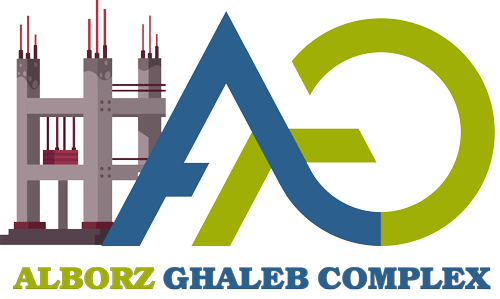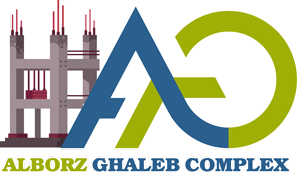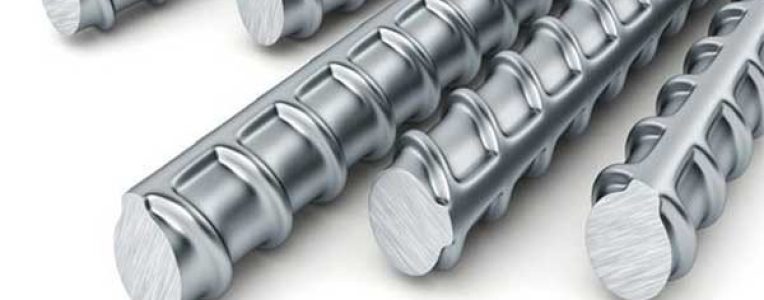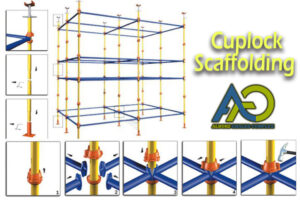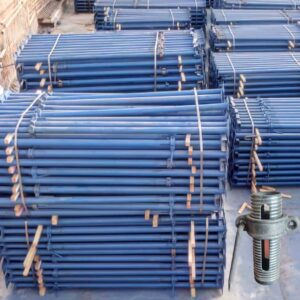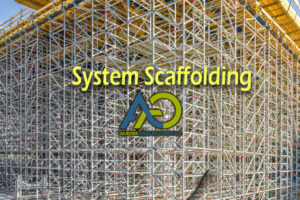Rebar, or reinforcing steel, is a vital component in reinforced concrete structures, providing tensile strength to complement concrete’s compressive capabilities. International building regulations, such as ACI 318, Eurocode 2, and ISO 6935, establish standardized guidelines for rebar use to ensure safety, durability, and efficiency in construction projects worldwide. This comprehensive guide explores key international standards, covering design requirements, technical specifications, weldability, and execution practices. Aimed at engineers, contractors, and construction professionals, this article offers actionable insights to navigate global rebar regulations and optimize project outcomes. For cutting-edge rebar processing solutions, explore Rebar Machinery.
Overview of International Rebar Standards
International building regulations provide a unified framework for rebar use in reinforced concrete, ensuring consistency across diverse regions and project types. These standards address rebar properties, placement, and execution to meet structural and safety requirements.
ACI 318: Building Code Requirements for Structural Concrete
Developed by the American Concrete Institute, ACI 318 is a widely adopted standard for reinforced concrete design in the United States and globally. It specifies rebar grades, mechanical properties, and placement requirements to ensure structural integrity.
- Rebar Grades: ACI 318 recognizes grades 40, 60, 80, and 100, with yield strengths of 40 ksi (276 MPa) to 100 ksi (690 MPa).
- Spacing: Minimum clear spacing between rebar is the greater of 1 inch or the rebar diameter.
- Concrete Cover: Minimum cover ranges from 1.5 inches (38 mm) for indoor conditions to 3 inches (76 mm) for exposure to soil.
Eurocode 2: Design of Concrete Structures
Eurocode 2 (EN 1992-1-1), used across the European Union and beyond, provides detailed guidelines for rebar in reinforced concrete. It emphasizes ductility, bond strength, and durability under various environmental conditions.
- Rebar Classes: Classes B500A, B500B, and B500C, with yield strengths around 500 MPa, are common.
- Bond Strength: Ribbed rebar is preferred for enhanced concrete bonding.
- Durability: Concrete cover varies from 10 mm to 55 mm based on exposure class (e.g., corrosion risk).
ISO 6935: Steel for the Reinforcement of Concrete
ISO 6935 is an international standard specifying rebar properties, including yield strength, tensile strength, and rib geometry. It categorizes rebar into grades like RB400 and RB500, with yield strengths of 400 MPa and 500 MPa, respectively.
For precise rebar processing compliant with these standards, Rebar Machinery offers advanced bending and cutting equipment.
Technical Specifications for Rebar
International standards define rebar’s mechanical, chemical, and geometric properties to ensure performance in reinforced concrete structures.
Mechanical Properties
Mechanical properties include yield strength, ultimate tensile strength, and elongation. For example, Eurocode 2 requires a minimum elongation of 5% for Class B rebar to ensure ductility. ACI 318 specifies a minimum elongation of 6% for Grade 60 rebar.
Chemical Composition
The chemical composition, particularly the carbon equivalent (CE), impacts rebar weldability. ISO 6935 recommends a CE below 0.50% for weldable rebar to avoid cracking during welding. Higher CE values may require preheating.
| Rebar Grade | Max Carbon Equivalent (%) | Weldability |
|---|---|---|
| RB400 | 0.45 | High |
| B500B | 0.50 | Moderate |
| Grade 80 | 0.55 | Requires Preheating |
Rebar Geometry and Ribbing
Ribbed rebar is standard in international regulations due to its superior bond with concrete. ISO 6935 specifies rib height and spacing to ensure adequate grip, while Eurocode 2 mandates a minimum bond strength of 2.5 MPa for ribbed rebar.
Rebar Weldability in International Standards
Weldability is a critical factor in rebar application, particularly for prefabricated cages and structural connections. International standards provide clear guidelines to ensure safe welding practices.
Weldability Requirements
ACI 318 permits welding for rebar with a CE below 0.55%, provided welding procedures comply with AWS D1.4 (Structural Welding Code for Reinforcing Steel). Eurocode 2 allows welding for Class B and C rebar with CE below 0.50%, with preheating for higher values.
Welding Methods
Common welding methods include shielded metal arc welding (SMAW) and gas metal arc welding (GMAW). ISO 6935 recommends low-hydrogen electrodes to minimize cracking risks. Proper joint preparation and post-weld cooling are essential for structural integrity.
Execution Requirements for Rebar Placement
Proper rebar placement is crucial for achieving the designed strength and durability of reinforced concrete structures. International standards outline precise requirements for spacing, concrete cover, and bending.
Rebar Spacing
ACI 318 requires a minimum clear spacing of 1 inch or the rebar diameter, whichever is greater, to ensure proper concrete flow. Eurocode 2 specifies a minimum spacing of 20 mm or the maximum aggregate size plus 5 mm.
Concrete Cover
Concrete cover protects rebar from corrosion and fire. Minimum cover requirements vary by standard and exposure:
- ACI 318: 1.5 inches (38 mm) indoors, 3 inches (76 mm) for soil exposure.
- Eurocode 2: 10 mm for low-risk environments, up to 55 mm for marine conditions.
- ISO 6935: 15 mm minimum, adjusted for environmental factors.
Rebar Bending
ACI 318 mandates a minimum bend diameter of 6 times the rebar diameter for bars above 5 mm, reduced to 4 times for smaller stirrups. Eurocode 2 specifies a minimum bend radius of 4 times the diameter for high-ductility rebar.
For accurate bending and cutting, Rebar Machinery provides state-of-the-art equipment to meet international standards.
Masonry Rebar in International Standards
Masonry rebar, or bed joint reinforcement, enhances the tensile strength of masonry walls, improving resistance to lateral loads like earthquakes or wind.
Masonry Rebar Specifications
International standards, such as ASTM A951 (USA) and EN 845-3 (Europe), specify masonry rebar as ladder or truss configurations with longitudinal wires of at least 3 mm diameter. The maximum vertical spacing is 16 inches (400 mm).
Execution of Masonry Rebar
Masonry rebar must be fully embedded in mortar with a minimum cover of 0.6 inches (15 mm) in humid environments or 0.5 inches (13 mm) in dry conditions. Corrosion-resistant materials, such as stainless steel or galvanized steel, are required in aggressive environments.
Benefits of Adhering to International Standards
Compliance with international rebar regulations offers significant advantages for construction projects:
- Global Consistency: Standardized rebar ensures compatibility across international projects.
- Structural Safety: Proper rebar selection and placement guarantee resistance to static and dynamic loads.
- Cost Efficiency: High-strength rebar reduces material usage, lowering costs.
- Durability: Adequate concrete cover and corrosion-resistant rebar extend structure lifespan.
Role of Modern Equipment in Compliance
Advanced rebar processing equipment, such as CNC bending and cutting machines, ensures compliance with international standards by delivering precision and efficiency. These tools minimize material waste and accelerate construction timelines. Discover more at Rebar Machinery.
Costs Associated with Rebar Execution
Rebar execution costs depend on several factors:
- Rebar Grade: Higher grades (e.g., B500C, Grade 80) are costlier but reduce overall consumption.
- Equipment: Automated machinery increases upfront costs but enhances productivity.
- Labor: Skilled workers are essential for precise placement and welding.
Challenges in Meeting International Standards
While international standards ensure quality, challenges include:
- Regional Variations: Differing environmental conditions require tailored rebar specifications.
- Cost Constraints: High-strength rebar and corrosion-resistant coatings can increase budgets.
- Skill Gaps: Proper execution demands trained personnel familiar with global standards.
Frequently Asked Questions
What are the main international rebar standards?
ACI 318, Eurocode 2, and ISO 6935 are the primary standards for rebar in reinforced concrete.
Is welding permitted for rebar?
Yes, for rebar with a carbon equivalent below 0.50–0.55%, depending on the standard. Preheating may be required for higher CE values.
What is the minimum concrete cover for rebar?
It ranges from 10 mm (Eurocode 2, low risk) to 76 mm (ACI 318, soil exposure), based on environmental conditions.
Conclusion
Adhering to international building regulations, such as ACI 318, Eurocode 2, and ISO 6935, is essential for ensuring the safety, durability, and efficiency of reinforced concrete structures. By selecting appropriate rebar grades, following weldability and placement guidelines, and utilizing modern equipment like Rebar Machinery, construction professionals can achieve superior project outcomes. This guide serves as an authoritative resource for navigating global rebar standards and executing high-quality construction projects worldwide.
